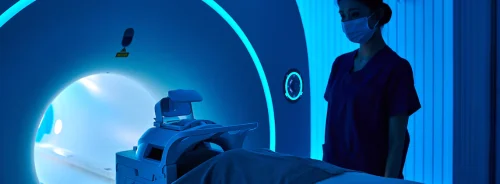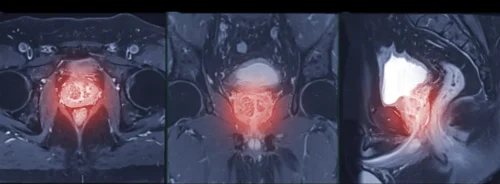HealthManagement, Volume 25 - Issue 3, 2025
Chronic migraine is a disabling, prevalent neurological disorder that remains underdiagnosed and undertreated. It significantly affects quality of life, productivity and health system costs, particularly among women. Many patients lack awareness, self-medicate or do not receive proper care. Despite advancements such as CGRP inhibitors and botulinum toxin, access and adherence remain low. Greater awareness, accurate diagnosis and coordinated care are essential to reduce its burden.
Key Points
- Chronic migraine is highly disabling and often underdiagnosed and undertreated worldwide.
- It disproportionately affects women and is linked to anxiety, depression and poor quality of life.
- Many patients rely on self-medication due to low awareness and limited access to specialist care.
- Diagnostic processes are often delayed despite clinical guidelines requiring no special tests.
- New treatments exist, but uptake and long-term effectiveness remain limited in many settings.
Despite being one of the most disabling and prevalent neurological disorders worldwide, chronic migraine remains underdiagnosed, undertreated and often overlooked in broader health policy discussions. With populations ageing and the chronic illness burden growing, health systems face increasing pressure to address migraine within long-term disease management frameworks. Understanding its prevalence, socioeconomic impact and barriers to effective care is essential for optimising service delivery and improving treatment.
Migraine: Definition, Epidemiology and Actuality
Primary headaches are the most widespread neurological disorders. The most serious maladaptation, and consequently economic losses, are caused by chronic headaches, in which the frequency of headache days varies from 15 per month to daily pain episodes for more than 3 months. The most common form among chronic daily headaches is chronic migraine. Migraine is a highly disabling primary headache disorder with a 1-year prevalence of ~15% in the general population. According to the Global Burden of Disease Study, migraine is the second most prevalent neurological disorder worldwide and is responsible for more disability than all other neurological disorders combined.
The Global Burden of Diseases (GBD2019) study reports that headaches are the leading neurological issue in the working-age population (15–49 years), with migraine occupying a leading position among women in this group. At the same time, recent epidemiological data show a steady increase in migraine cases, particularly among young people and school-age children.
It is known that the level of medical treatment among migraine patients is extremely high. However, most of them never receive a professional diagnosis and are engaged in self-diagnosis and self-medication. According to the French Nationwide Population-Based Survey (FRAMIG 3), only 60% of people with migraines had ever sought medical advice, 34% were under active specialist supervision, and only 8% received treatment prescribed by a doctor. About 60% of migraine patients were unaware of the existence of this disease, and the average time between the onset of the disease and the first consultation was 3.7±5.8 years. 78.6% of respondents had to take medications with every migraine attack, of which only 38.6% used drugs recommended by doctors, and 51.1% used drugs not recommended for the treatment of migraines. In general, more than 50% of patients experiencing migraine attacks never see a doctor, and only 20% are diagnosed with migraine. Awareness of patients about the disease and current strategies of behavioural and pharmacological treatment is still unsatisfactory, and overall literacy remains low.
In both America and Europe, health information is one of the most sought-after topics on the Internet, and many patients use the Internet before seeking a professional diagnosis. C.F. Mullins analysed Twitter activity using pain-related keywords. During a 14-day period, 941 tweets from 715 authors were identified. The most common keywords were "headache," "migraine” and "back pain."
Clinical Manifestations and Health System Burden
Migraine manifests as recurrent attacks of headache with a range of accompanying symptoms. In approximately one-third of individuals, headache is preceded or accompanied by transient neurological disturbances referred to as migraine aura. A minority develop chronic migraine, in which attacks become highly frequent. The pathogenesis of migraine is believed to involve peripheral and central activation of the trigeminovascular system, with cortical spreading depression underlying migraine aura. However, much remains unknown about the specific pathogenic processes and few mechanism-based treatment options currently exist.
Chronic migraine is widespread globally, including in Russia, and is associated with a significant decrease in quality of life and daily functioning. It presents a serious economic burden for patients and the healthcare system as a whole. In addition to affecting individual quality of life, chronic migraine contributes significantly to lost productivity, increased healthcare utilisation and disability-adjusted life years, posing a growing challenge for health system sustainability.
Migraine disproportionately affects women, with population studies showing it is two to three times more common in females than in males. Puberty marks the increase in migraine prevalence in women. Hormonal influence, genetic predisposition and environmental stressors are considered contributing factors. As migraine is less common in men, it is often under-recognised; as a result, male patients are less likely to consult health services or receive appropriate care.
This neurological disease is frequently comorbid with emotional disorders, especially depression and anxiety, as well as oromandibular disorder and fibromyalgia. Without timely diagnosis and treatment, these conditions raise the risk of chronic migraine, increase patient disability, lower quality of life and burden health systems further. Depression is diagnosed in 8.6–47.9% of chronic migraine patients, and anxiety disorders occur in 30.2%. The high comorbidity suggests a shared aetiology and pathogenesis.
Diagnosis
According to international guidelines, migraine diagnosis is entirely clinical, that is, it is based on medical history and objective examination of the patient. Laboratory and instrumental studies, including neuroimaging studies, are not included into the standards for the diagnosis of migraine, since most patients with a typical clinical picture do not reveal any specific changes that could indicate the cause or mechanism of the onset of headache.
A study showed that neurologists are the primary specialists patients consult (56% on first visit). The number of involved specialists increases with each visit. The therapist ranks third, and ophthalmologists second, in frequency of first consultations. Diagnosis of migraine was established at the first visit in 71.3% of cases, which is a very positive indicator. In rare cases (0.1%), patients required up to eight visits. The majority (64%) reported positive experiences with neurologists. Negative feedback were often associated with the perception that "no one can help." Among the examinations conducted by patients, general and biochemical blood tests and MRI were the most common procedures. In 63% of cases, diagnostic procedures were independently initiated by doctors. Many patients feel stigmatised, believing their condition is not taken seriously by doctors or family members.
Treatment Gaps
Treatments for migraine include acute and preventive medications and a range of non-pharmacological therapies. Despite these treatment options and the comprehensive diagnostic criteria, clinical care remains suboptimal — misdiagnosis and under-treatment of migraine are substantial public health challenges.
Population-based European data indicate that only 2–14% of eligible individuals use preventive medication, an alarming finding that calls for global action. A comprehensive approach is needed to facilitate accurate diagnosis and evidence-based management.
Many types of treatment are available for those living with migraines. Acute migraine medication, including triptans, paracetamol and nonsteroidal anti-inflammatory drugs (NSAIDS), have been shown to reduce the symptoms and disease burden of migraines, though they could not prevent the occurrence of the condition. Antiepileptics, antidepressants and betablockers are used to reduce the frequency and severity of migraines, but some patients experience side effects and limited effectiveness. Many patients report not being not satisfied with these older conventional treatments, and adherence can be poor.
In 2010, botulinum toxin type A was approved for chronic migraine following an extensive PREEMPT (Phase III Research Evaluating Migraine Prophylaxis Therapy) clinical research programme. Injections significantly reduced headache frequency — by 30% after the first injection in 71% of patients, and in 80% after the second. Regular injections every 12 weeks are advised during the first year, followed by extended intervals based on effect.
More recently, four calcitonin gene-related peptide monoclonal antibody (CGRP mAb) treatments have been approved for the prevention of chronic and episodic migraine. These treatments inhibit the vascular CGRP receptors that are suspected to be the cause of migraine pain. However, even with these treatments many patients continue to need acute medications and some people have reported a waning of treatment effect. Most recently, a new oral CGRP receptor antagonist rimegepant has also been approved by the US Food and Drug Administration for both acute and preventive treatment.
Conclusion
Migraine is a highly disabling, costly, underdiagnosed and undertreated disorder which has been shown to have a similarly high prevalence in all countries studied. In most countries, it is consistently ranked among the 10 diseases by burden. Despite these facts, public and political awareness of migraine remains limited compared to many other conditions with lower burdens.
Successful diagnostic and treatment of migraine reduces disease burden and improves quality of life. Many pharmacologic and nonpharmacologic treatment options are available for the prevention of migraine, but increased awareness and system-level change is needed to optimise care delivery and reduce disease burden.
Conflict of Interest
None






